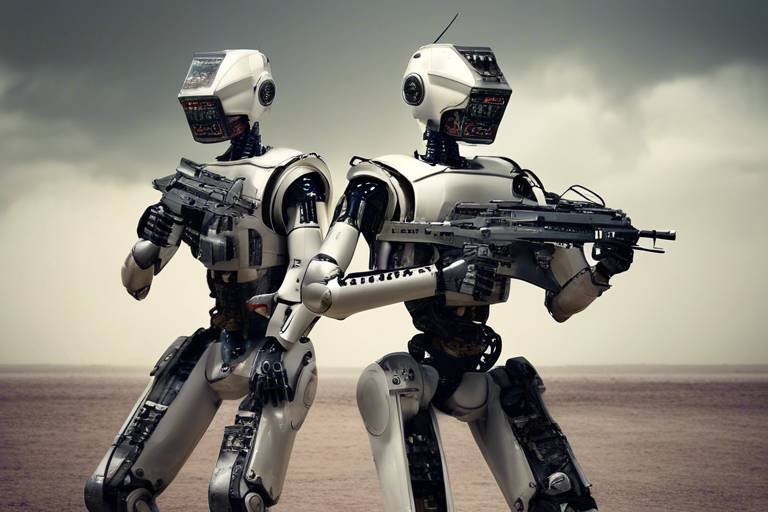Robotic Soldiers - How Close Are We?
The concept of robotic soldiers has transitioned from the realms of science fiction to a tangible reality, sparking both excitement and concern across various sectors. As technology advances at an unprecedented pace, we find ourselves on the brink of a new era in military operations where machines may soon take on roles traditionally held by human soldiers. But just how close are we to deploying these robotic warriors in combat?
Military robotics have evolved significantly over the decades. From the early days of mechanized units during World War II to today's sophisticated autonomous systems, the journey has been marked by key innovations that have reshaped the battlefield. The integration of artificial intelligence (AI) has revolutionized how these machines operate, allowing for greater autonomy and efficiency. However, this evolution invites a host of questions regarding the ethical implications of using such technologies in warfare.
Today's military landscape features an array of robotic technologies, including unmanned aerial vehicles (UAVs), unmanned ground vehicles (UGVs), and AI-driven systems. These technologies are not just tools; they are changing the dynamics of combat. For instance, UAVs have become essential for surveillance and reconnaissance, providing real-time intelligence that informs military strategies. Combat drones, a subset of UAVs, are equipped with advanced weaponry and can engage in strikes without putting human pilots at risk. This shift toward automation raises critical questions about the future of warfare and the role of human soldiers.
As we delve deeper into the realm of robotic soldiers, we must also confront the ethical implications of their use. Who is accountable when a robotic soldier makes a mistake? This question of accountability in warfare is complex and multifaceted. The legal frameworks surrounding military operations are struggling to keep pace with technological advancements, leaving a gray area regarding responsibility for actions taken by autonomous systems.
Moreover, the necessity of human oversight in robotic military operations cannot be overstated. While autonomous systems can make decisions at lightning speed, the risk of unintended consequences looms large. Maintaining a balance between autonomy and human intervention is crucial to ensure ethical conduct in warfare. After all, war is not just a series of tactical maneuvers; it is a deeply human endeavor that requires moral considerations.
Looking toward the future, the potential developments in military robotics are both exciting and daunting. Emerging technologies promise to enhance the capabilities of robotic soldiers, but they also pose significant challenges for global security and warfare dynamics. As nations race to develop these technologies, the implications for international relations and conflict resolution are profound. The question remains: can we harness the power of robotic soldiers for good, or will we create a new arms race that escalates global tensions?
- What are robotic soldiers? Robotic soldiers refer to autonomous or semi-autonomous machines designed for military operations, capable of performing tasks traditionally assigned to human soldiers.
- How do UAVs contribute to military operations? UAVs are used for surveillance, reconnaissance, and targeted strikes, providing real-time intelligence and reducing the risk to human personnel.
- What are the ethical concerns surrounding robotic soldiers? Key concerns include accountability for actions taken by robots, the potential for dehumanization of warfare, and the need for human oversight in critical decision-making processes.
- Are robotic soldiers going to replace human soldiers? While robotic soldiers may take on specific roles, they are unlikely to fully replace human soldiers due to the complex nature of warfare and the need for human judgment.
- What is the future of military robotics? The future may see advanced technologies enhancing the capabilities of robotic soldiers, but it will also require careful consideration of ethical implications and global security dynamics.
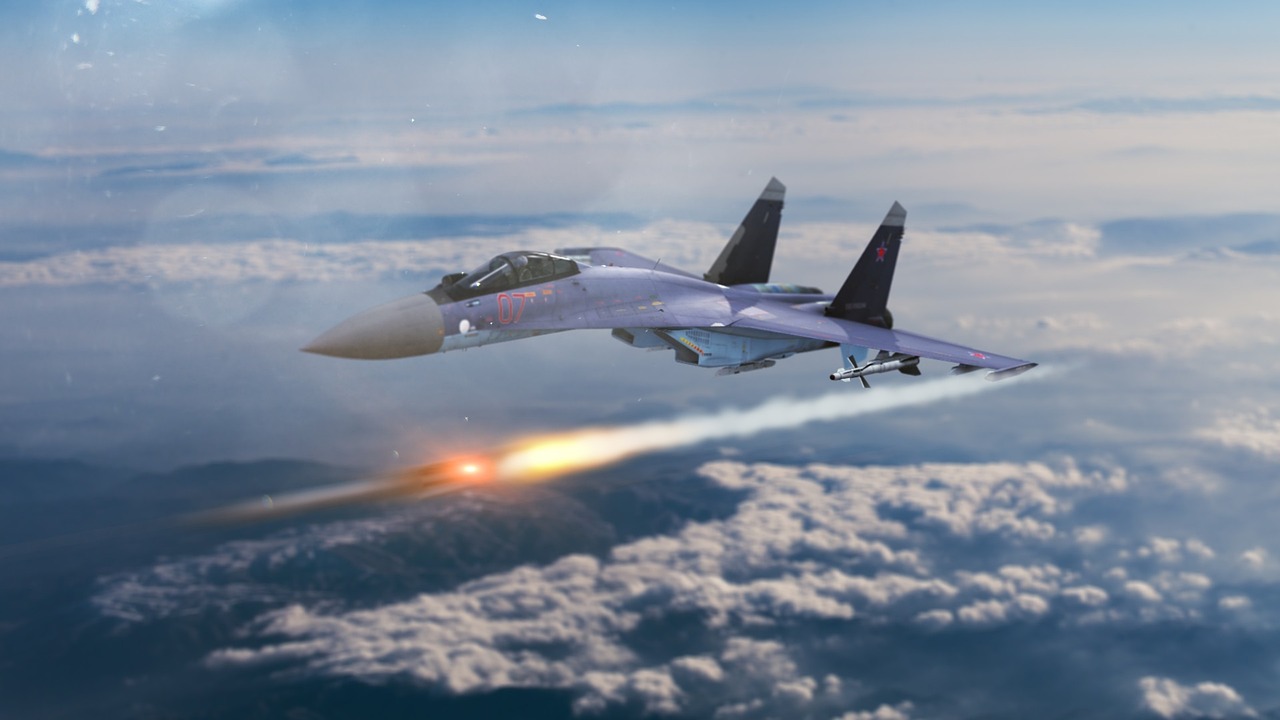
The Evolution of Military Robotics
The journey of military robotics has been nothing short of astonishing. It all began in the early 20th century, when the concept of mechanized units started to emerge. Think of it like the evolution of a caterpillar into a butterfly; the transformation has been gradual yet spectacular. The first significant leap came during World War I, with the introduction of tanks. These hulking machines were a game-changer, demonstrating the potential of mechanized warfare. They were the pioneers of a new era, laying the groundwork for future innovations.
As we moved into World War II, the development of military robotics took another significant step forward. The use of radio-controlled devices and early drones, known as "Radioplane OQ-2," showcased the potential for remote warfare. This period marked the beginning of a new relationship between humans and machines on the battlefield. The technology was still rudimentary, but it hinted at the possibilities that lay ahead.
Fast forward to the late 20th century, and we see the emergence of more advanced robotic systems. The Gulf War in the 1990s introduced the world to precision bombing and surveillance technologies. The use of Unmanned Aerial Vehicles (UAVs) for reconnaissance and targeted strikes began to change the dynamics of warfare. These UAVs were not just tools; they were becoming integral players in military strategies, providing real-time intelligence and enabling forces to strike with pinpoint accuracy.
Today, we stand on the brink of a new era in military robotics. The advancements in artificial intelligence (AI) and machine learning have ushered in a wave of autonomous systems that can operate with minimal human intervention. Imagine a battlefield where robots can analyze data, make decisions, and execute missions without waiting for orders. This is not science fiction; it’s becoming a reality. Modern military robotics encompasses a variety of systems, including:
- Combat Drones: Designed for offensive operations.
- Surveillance Drones: Equipped for intelligence gathering and reconnaissance.
- Unmanned Ground Vehicles (UGVs): Used for logistics and combat support.
The rapid evolution of military robotics has not only changed how wars are fought but also raised significant questions about the future of warfare. With the increasing reliance on these technologies, we must consider the implications for soldiers on the ground and the ethical dilemmas that arise. As we delve deeper into the world of robotic soldiers, it’s essential to reflect on how far we’ve come and where we might be headed. Will we see a future where human soldiers are replaced by machines, or will they coexist, each playing a vital role in the theater of war?
- What are the main types of military robots? Military robots can be categorized into several types, including drones (UAVs), unmanned ground vehicles (UGVs), and autonomous systems designed for various combat and support roles.
- How have military robots changed warfare? They have enhanced surveillance capabilities, improved precision in strikes, and reduced the risk to human soldiers by taking on dangerous missions.
- What are the ethical concerns surrounding robotic soldiers? Issues include accountability for actions taken by robots, the potential dehumanization of warfare, and the risks of autonomous decision-making in combat scenarios.

Current Technologies in Robotic Warfare
The landscape of warfare is rapidly changing, with technology leading the charge into a new era of combat. Robotic soldiers are not just a concept of science fiction anymore; they are becoming a reality on the battlefield. The advancements in military robotics have paved the way for a myriad of technologies that are reshaping how wars are fought. From drones to unmanned ground vehicles, the capabilities of these machines are astounding and their roles in modern warfare are becoming increasingly vital.
At the forefront of these advancements are Unmanned Aerial Vehicles (UAVs), commonly known as drones. These flying machines have revolutionized military operations by providing real-time surveillance, reconnaissance, and even strike capabilities without putting human pilots at risk. The integration of artificial intelligence into UAVs has enhanced their operational efficiency, allowing them to process vast amounts of data and make tactical decisions swiftly. For instance, UAVs can now autonomously navigate complex environments, avoiding obstacles and adjusting their flight paths based on real-time conditions.
UAVs come in various forms, serving multiple purposes in military operations. Their ability to gather intelligence and conduct strikes has significantly altered combat strategies. The operational use of UAVs can be categorized into two primary types: combat drones and surveillance drones. Each type plays a crucial role in enhancing military effectiveness.
Combat drones are designed to engage in offensive operations. Their sleek designs and advanced weaponry capabilities make them formidable assets on the battlefield. However, their deployment is not without controversy. The ethical implications surrounding their use, particularly concerning civilian casualties, have sparked heated debates. Critics argue that the lack of human presence in combat situations can lead to a dehumanization of warfare, where the value of human life is overshadowed by technological efficiency.
On the other hand, surveillance drones play a pivotal role in intelligence-gathering missions. These drones provide ground troops with crucial situational awareness, allowing military planners to make informed decisions. The data collected from surveillance drones can be analyzed to identify enemy positions, monitor troop movements, and assess battlefield conditions. The effectiveness of these drones in enhancing operational strategies cannot be overstated, as they provide a level of insight that was previously unattainable.
As we shift our focus from the skies to the ground, unmanned ground vehicles (UGVs) are making significant strides in military applications. These robotic soldiers are designed to operate on land, performing tasks such as logistics, reconnaissance, and even combat. The versatility of UGVs allows them to navigate challenging terrains, transport supplies, and gather intelligence without risking human lives. However, the integration of UGVs into military operations also presents challenges, particularly in terms of reliability and the ability to adapt to unpredictable environments.
In essence, the current technologies in robotic warfare are not just tools; they are transforming the very fabric of military operations. As these machines become more sophisticated, they raise important questions about the future of warfare and our ethical responsibilities. The balance between leveraging technology for military advantage and maintaining the humanity in warfare is a delicate one that society must navigate carefully.
- What are UAVs and how are they used in military operations?
UAVs, or Unmanned Aerial Vehicles, are drones used for surveillance, reconnaissance, and combat operations, providing real-time data and reducing risk to human pilots. - What are the ethical concerns surrounding combat drones?
The use of combat drones raises concerns about civilian casualties, accountability in warfare, and the potential dehumanization of combat. - How do autonomous ground vehicles enhance military operations?
UGVs operate on land, performing various tasks such as logistics and reconnaissance, thereby reducing the risk to human soldiers and increasing operational efficiency.
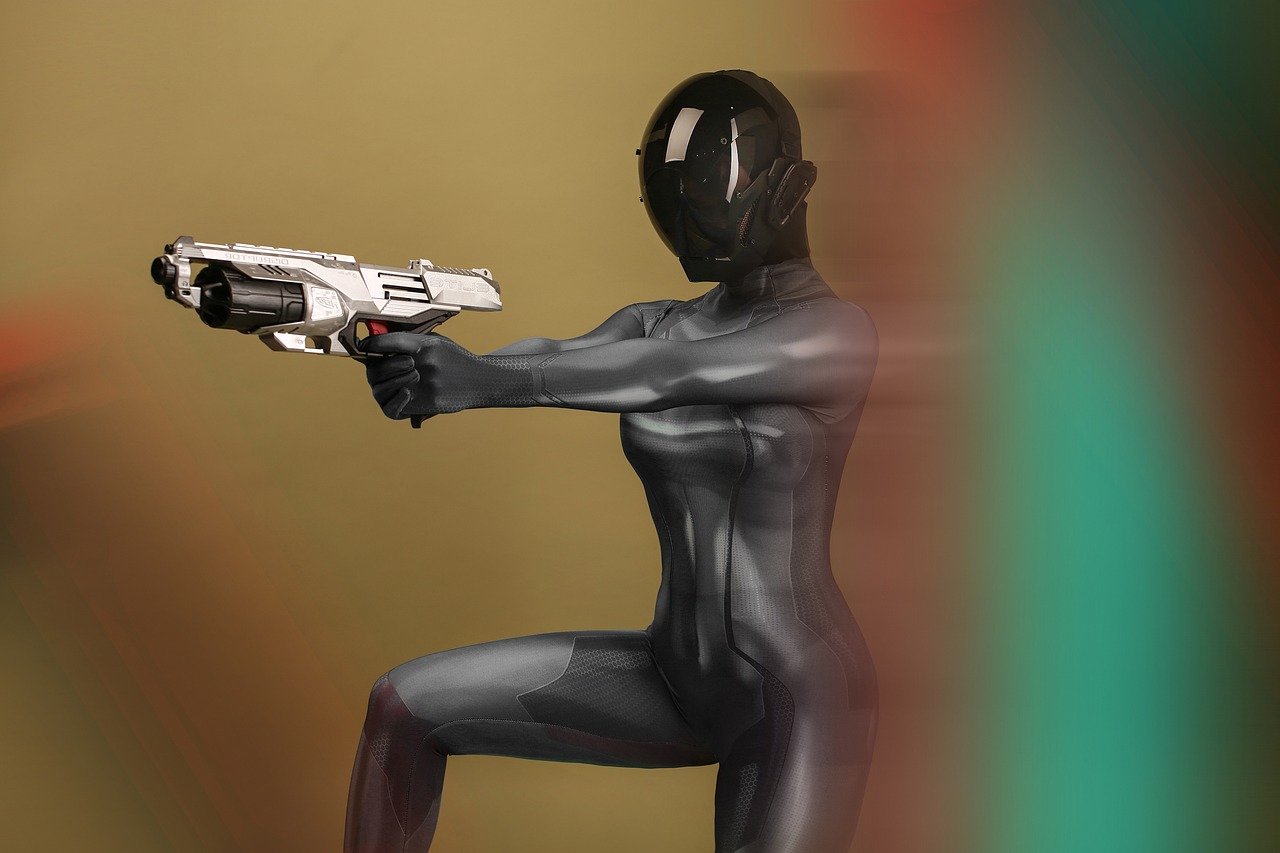
Unmanned Aerial Vehicles (UAVs)
Unmanned Aerial Vehicles, commonly known as UAVs, have revolutionized the way military operations are conducted. These flying machines, often referred to as drones, are no longer just a futuristic concept; they have become a vital component of modern warfare. With their ability to operate without a pilot on board, UAVs provide a unique advantage in both surveillance and combat scenarios. Imagine having eyes in the sky that can monitor enemy movements without putting soldiers at risk. That's the power of UAVs!
The versatility of UAVs is astounding. They can perform a variety of missions, including surveillance, reconnaissance, and even airstrikes. Each of these roles plays a crucial part in shaping combat strategies and enhancing situational awareness on the battlefield. For instance, UAVs equipped with high-resolution cameras can gather real-time intelligence, allowing commanders to make informed decisions without exposing troops to danger.
In terms of design, UAVs come in various shapes and sizes, tailored for specific missions. Some are small and nimble, perfect for covert operations, while others are larger and armed, capable of delivering precision strikes. This diversity allows military forces to deploy the right tool for the job, maximizing effectiveness while minimizing risk. For example, the MQ-9 Reaper drone is known for its ability to carry out precise strikes, while smaller UAVs like the Raven can be used for quick reconnaissance missions.
However, the rise of UAVs is not without its controversies. The deployment of combat drones has sparked intense debates regarding their ethical implications. Questions arise about civilian casualties and the accountability of military personnel when decisions are made by machines. To navigate these challenges, it’s essential to establish clear guidelines and regulations governing the use of UAVs in combat.
Moreover, the impact of UAVs on combat strategies cannot be overstated. They have changed the way wars are fought, allowing for asymmetrical warfare where smaller, technologically advanced forces can take on larger, traditional armies. The ability to strike from a distance without risking pilot lives has led to a shift in military tactics, emphasizing the importance of technology in modern warfare.
In summary, UAVs are a game-changer in military operations, offering unparalleled capabilities in surveillance and combat. As technology continues to advance, we can expect even more sophisticated UAVs to emerge, further altering the landscape of warfare. The question remains: how will military organizations adapt to this rapidly evolving technology while addressing the ethical dilemmas it presents?
- What are UAVs primarily used for? UAVs are primarily used for surveillance, reconnaissance, and targeted strikes in military operations.
- How do UAVs enhance military operations? They provide real-time intelligence, reduce risks to human life, and allow for precise strikes without direct engagement.
- What are the ethical concerns surrounding UAVs? Ethical concerns include civilian casualties, accountability for actions taken by drones, and the potential for dehumanization in warfare.
- Are there regulations governing the use of UAVs? Yes, there are various international and national regulations aimed at ensuring the responsible use of UAVs in military operations.
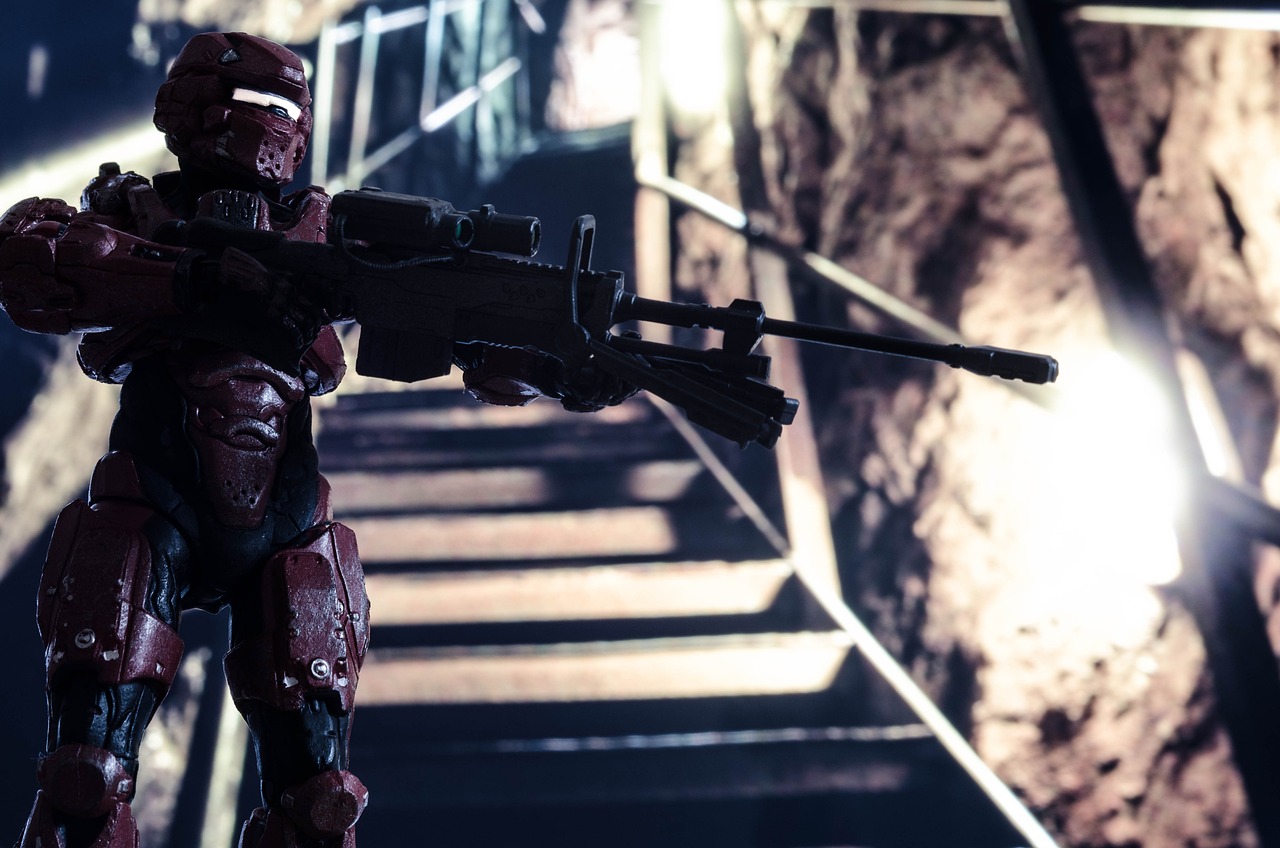
Combat Drones
Combat drones, often referred to as unmanned combat aerial vehicles (UCAVs), are revolutionizing the way military operations are conducted. These advanced machines are not just flying robots; they are sophisticated systems equipped with cutting-edge technology that enables them to engage in combat, conduct surveillance, and gather intelligence. Imagine a soldier in the field, but instead of being on the ground, they’re flying high above, equipped with the ability to strike targets with pinpoint accuracy while keeping themselves out of harm's way. This is the new reality of modern warfare.
One of the most significant advantages of combat drones is their ability to reduce the risk to human life. By deploying drones for missions that would typically place soldiers in danger, military forces can maintain operational effectiveness while minimizing casualties. However, this raises a critical question: does the detachment from the battlefield lead to a dehumanization of war? As these drones operate remotely, pilots often find themselves thousands of miles away from the action, which can create a disconnect from the realities of combat. This emotional distance can make it easier to make decisions that might seem unthinkable if made face-to-face.
Combat drones come in various shapes and sizes, each designed for specific operational roles. For instance, the MQ-9 Reaper is a well-known combat drone used by the U.S. Air Force, capable of carrying out precision strikes and conducting reconnaissance missions. Its ability to loiter over a target for extended periods allows for real-time intelligence gathering, which is invaluable in modern combat scenarios. On the other hand, the General Atomics MQ-1 Predator has been a game-changer in terms of surveillance and strike capabilities, allowing military forces to monitor enemy movements and respond rapidly to threats.
Despite their advantages, the use of combat drones is not without controversy. The deployment of these machines has sparked intense debates over ethical considerations, particularly concerning civilian casualties. The precision of drone strikes is often called into question, especially when operations result in unintended harm to non-combatants. Critics argue that the use of drones can lead to a lower threshold for engaging in military action, as the perceived risk to personnel is significantly reduced. This can create a cycle of violence, where the ease of striking targets leads to more frequent military interventions.
Moreover, the legal frameworks governing the use of combat drones are still evolving. There is an ongoing discussion about accountability and the rules of engagement when it comes to autonomous decision-making in combat scenarios. If a drone makes a mistake, who is held responsible? Is it the pilot controlling the drone, the commanding officer, or the manufacturer of the technology? These questions highlight the complexities of integrating robotic soldiers into modern warfare.
In conclusion, while combat drones represent a significant advancement in military technology, they also bring forth a myriad of ethical, legal, and operational challenges that must be addressed. As we move forward, it is crucial to strike a balance between leveraging the capabilities of combat drones and ensuring that their use aligns with our moral and ethical standards in warfare. The future of combat drones will undoubtedly continue to evolve, and with it, the discussions surrounding their implications will remain at the forefront of military strategy.
- What are combat drones used for? Combat drones are primarily used for surveillance, reconnaissance, and precision strikes in military operations.
- How do combat drones reduce risks to soldiers? By allowing military forces to conduct operations remotely, combat drones minimize the exposure of personnel to dangerous situations on the ground.
- What are the ethical concerns surrounding combat drones? Ethical concerns include civilian casualties, accountability for strikes, and the potential dehumanization of warfare.
- What is the difference between combat drones and surveillance drones? Combat drones are equipped for offensive operations, while surveillance drones are primarily used for intelligence gathering and reconnaissance.
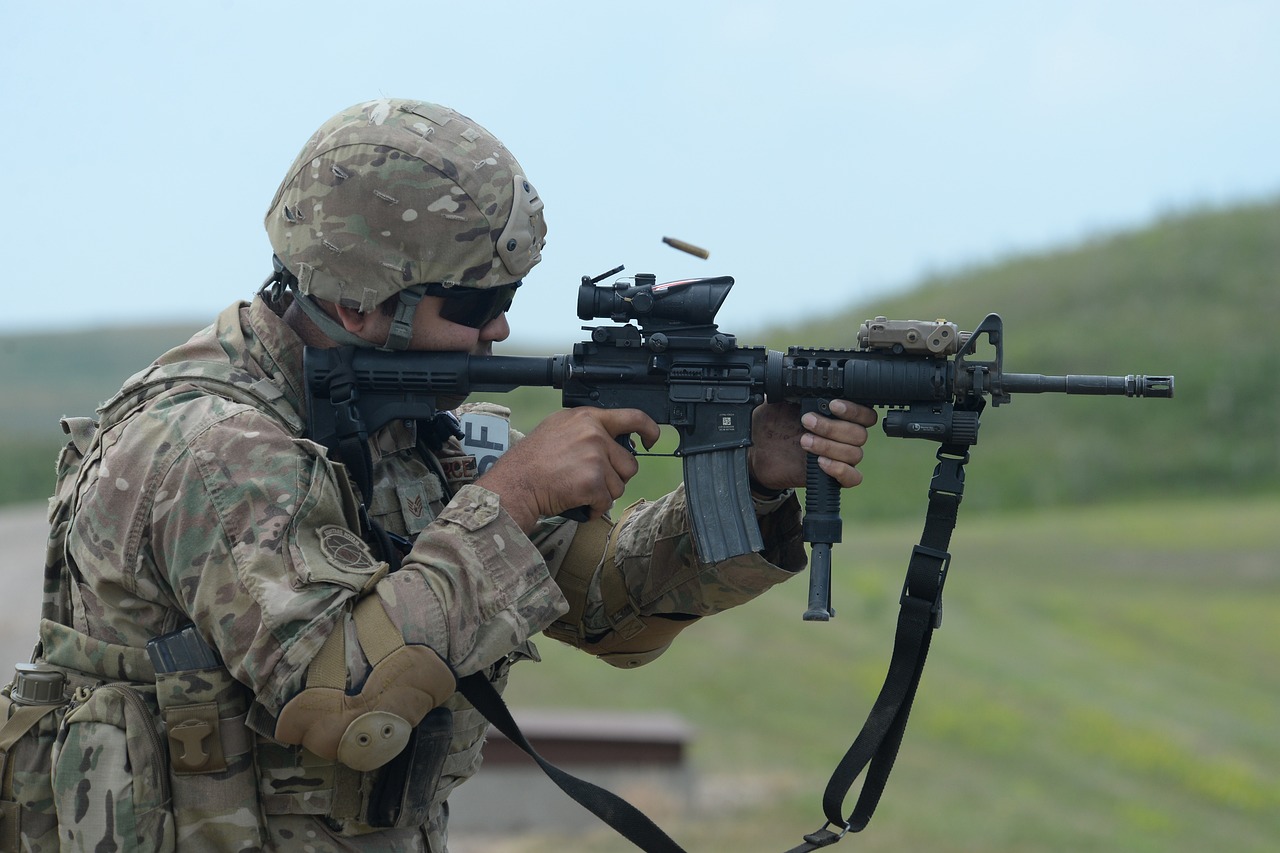
Surveillance Drones
In the rapidly evolving landscape of modern warfare, have emerged as a pivotal tool for military operations. These unmanned aerial vehicles (UAVs) are not just flying cameras; they are sophisticated systems equipped with advanced technology that allows for real-time intelligence gathering. Imagine having a pair of eyes in the sky that can monitor enemy movements, assess battlefield conditions, and provide critical data to ground troops—all without putting human lives at risk. This capability transforms the way military strategies are devised and executed.
Surveillance drones are designed to operate at various altitudes and are equipped with an array of sensors, including high-resolution cameras, infrared imaging, and radar systems. They can be deployed for a multitude of purposes, such as:
- Reconnaissance: Gathering information about enemy positions and movements.
- Target Acquisition: Identifying potential targets for airstrikes or ground operations.
- Situational Awareness: Providing commanders with a comprehensive view of the battlefield.
One of the most significant advantages of using surveillance drones is their ability to operate in high-risk environments without endangering personnel. For instance, during conflicts in urban areas, these drones can fly above the battlefield, collecting data and relaying it back to command centers. This real-time intelligence can be the difference between success and failure in military operations, as it allows for informed decision-making and rapid response to changing situations.
Furthermore, the integration of artificial intelligence (AI) into surveillance drones has taken their capabilities to the next level. AI algorithms can process vast amounts of data, identifying patterns and potential threats much faster than human operators. This technology can enhance the drone's ability to distinguish between combatants and non-combatants, thereby minimizing collateral damage—a critical concern in contemporary warfare.
However, the use of surveillance drones is not without its controversies. Critics argue that the reliance on these technologies can lead to a detachment from the realities of war, as operators may be thousands of miles away from the battlefield. This distance can create a sense of disconnection, potentially leading to decisions that lack the necessary empathy for human life. Additionally, the issue of privacy arises, as these drones can inadvertently invade the personal lives of civilians in conflict zones.
As we look to the future, the role of surveillance drones in military operations is expected to expand even further. With advancements in drone technology, including increased autonomy and enhanced data analysis capabilities, we can anticipate a future where these flying sentinels play an even more integral role in shaping the outcomes of conflicts. The balance between leveraging technology for strategic advantage and maintaining ethical standards will continue to be a critical discussion as we navigate this new frontier in warfare.
- What are surveillance drones used for? Surveillance drones are primarily used for reconnaissance, target acquisition, and enhancing situational awareness in military operations.
- How do surveillance drones gather intelligence? They are equipped with high-resolution cameras, infrared sensors, and radar systems that capture real-time data and relay it back to command centers.
- What are the ethical concerns surrounding surveillance drones? Concerns include the potential for privacy invasion, detachment from the realities of war, and the risk of dehumanizing warfare.
- Will surveillance drones become more autonomous in the future? Yes, advancements in AI and machine learning are likely to increase the autonomy of surveillance drones, allowing them to process data and make decisions more independently.

Autonomous Ground Vehicles
Autonomous Ground Vehicles (UGVs) are revolutionizing the way military operations are conducted on the battlefield. These sophisticated machines, designed to operate without human intervention, are becoming increasingly vital in various military applications. Imagine a world where robots can traverse treacherous terrains, deliver supplies, or even engage in combat—all while reducing the risk to human soldiers. The advancements in technology have made this a reality, and it's an exciting time to explore how UGVs are shaping modern warfare.
One of the primary roles of UGVs is in logistics. They can transport ammunition, medical supplies, and other essential equipment to remote locations, ensuring that troops have what they need without putting human lives at risk. This capability is particularly crucial in hostile environments where traditional supply routes may be compromised. For instance, the U.S. Army's Logistics Support Vessel has been designed to autonomously navigate to deliver supplies, illustrating the potential efficiency gains.
In addition to logistics, UGVs are also making strides in reconnaissance. Equipped with advanced sensors and cameras, these vehicles can gather intelligence from the battlefield without exposing soldiers to danger. They can scout enemy positions, detect threats, and relay valuable information back to command centers. This capability enhances situational awareness, allowing military leaders to make informed decisions quickly. The RoboCup, a notable UGV, has shown exceptional performance in surveillance missions, showcasing the potential of robotics in modern warfare.
However, the deployment of UGVs is not without challenges. One significant issue is the technological limitations regarding navigation and obstacle avoidance. While advancements in artificial intelligence have improved these aspects, UGVs still struggle with unpredictable environments. For instance, rough terrains, adverse weather conditions, and sudden obstacles can hinder their effectiveness. As a result, ongoing research and development are essential to refine these technologies further.
Moreover, the integration of UGVs into military operations raises questions about the future of combat. Will these vehicles replace human soldiers entirely? While UGVs can take on many roles, the human element remains irreplaceable in certain situations, particularly in complex decision-making scenarios. It's crucial to strike a balance between leveraging technology and maintaining human oversight to ensure ethical conduct on the battlefield.
As we look to the future, the potential for UGVs is immense. With continued advancements in AI and robotics, we can expect to see even more sophisticated autonomous systems capable of performing a wider array of tasks. From search and rescue missions to direct combat roles, the possibilities are endless. However, as we embrace these technologies, we must also consider the ethical implications and ensure that we are prepared for the challenges they may bring.
- What are Autonomous Ground Vehicles?
Autonomous Ground Vehicles (UGVs) are robotic systems designed to operate on the ground without direct human control, performing tasks such as logistics, reconnaissance, and combat support. - How do UGVs enhance military operations?
UGVs reduce risks to human soldiers by taking on dangerous tasks, improving logistics, and providing real-time intelligence and reconnaissance capabilities. - What challenges do UGVs face?
UGVs encounter challenges such as navigation in unpredictable environments, obstacle avoidance, and the need for ongoing technological advancements to improve their effectiveness. - Will UGVs replace human soldiers?
While UGVs can perform many roles, human soldiers are irreplaceable in complex decision-making scenarios, making it essential to maintain a balance between technology and human oversight.
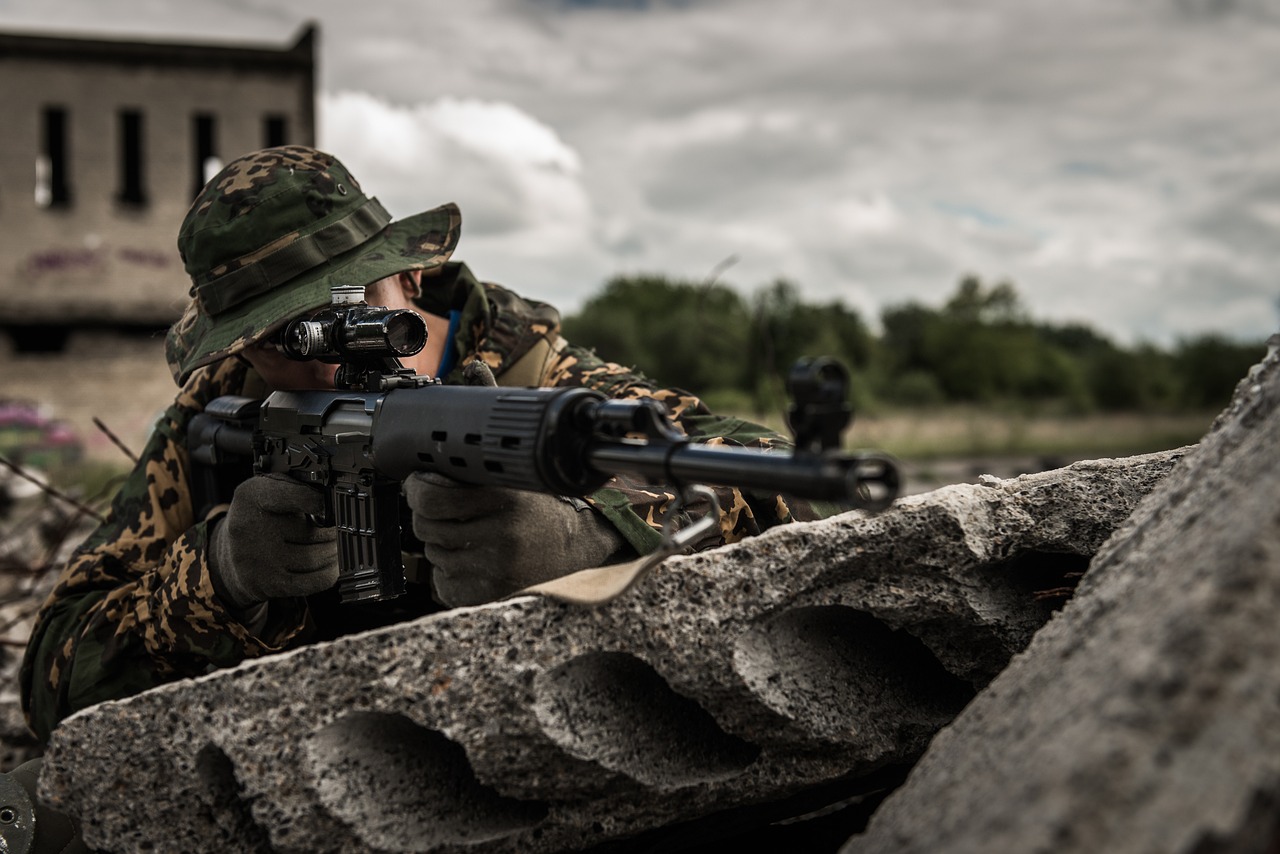
The Ethical Implications of Robotic Soldiers
As we stand on the brink of a new era in warfare, the rise of robotic soldiers brings with it a host of ethical implications that society must grapple with. The prospect of machines making life-and-death decisions raises profound questions about accountability, morality, and the very nature of warfare. Are we ready to entrust our military operations to machines that can think and act independently? This question is not just a matter of technological capability; it’s a moral battleground where the stakes are incredibly high.
One of the most pressing concerns is the issue of accountability in warfare. If a robotic soldier commits an error, such as mistakenly targeting civilians, who is responsible? Is it the programmer who wrote the code, the military personnel who deployed the machine, or the machine itself? Currently, legal frameworks struggle to keep pace with technological advancements, leaving a gray area that could lead to serious consequences. As we develop these autonomous systems, we must create clear guidelines and accountability measures to ensure that human lives are protected and that justice can be served when things go wrong.
Furthermore, the potential for dehumanization in warfare is another critical ethical consideration. Traditional combat involves human soldiers who experience the emotional weight of their actions. Robotic soldiers, however, lack this emotional capacity, which could lead to a detachment from the harsh realities of war. When decisions about life and death are made by algorithms, does it make it easier for military leaders to engage in conflict? The risk is that warfare could become more frequent and less scrutinized, as the human cost becomes obscured by the presence of machines.
Another significant factor is the necessity of human oversight and control in military operations involving robotic soldiers. While the benefits of automation are clear—improved efficiency, reduced risk to human life, and enhanced capabilities—there must always be a human element involved in decision-making processes. This raises the question: How do we strike a balance between leveraging technology and maintaining ethical standards? It’s crucial that we establish systems where human operators can intervene when necessary, ensuring that the moral compass of warfare remains intact.
As we consider the future of robotic soldiers, we must also address how these technologies could change the dynamics of global security. The proliferation of autonomous military systems could lead to an arms race, with nations vying to develop the most advanced robotic soldiers. This could destabilize international relations and lead to conflicts that might not have occurred otherwise. The ethical implications extend beyond the battlefield; they influence how nations interact with one another and how we perceive warfare as a whole.
In summary, the ethical implications of robotic soldiers are complex and multifaceted. As we forge ahead with these technologies, it is imperative that we engage in open dialogues about their moral ramifications. We must consider the responsibility we hold as creators of these machines and ensure that we do not lose sight of our humanity in the process. The future of warfare may be robotic, but the ethical considerations must remain firmly grounded in human values.
- What are the main ethical concerns regarding robotic soldiers?
The main concerns include accountability for actions taken, the potential dehumanization of warfare, and the necessity of human oversight. - Who is responsible if a robotic soldier causes civilian casualties?
This remains a gray area, with potential accountability falling on programmers, military personnel, or the machines themselves. - How can we ensure ethical conduct in robotic warfare?
Establishing clear guidelines and maintaining human oversight in decision-making processes are crucial steps to ensure ethical conduct. - Could robotic soldiers lead to an arms race?
Yes, the development of advanced robotic soldiers could potentially destabilize international relations and lead to increased military conflicts.
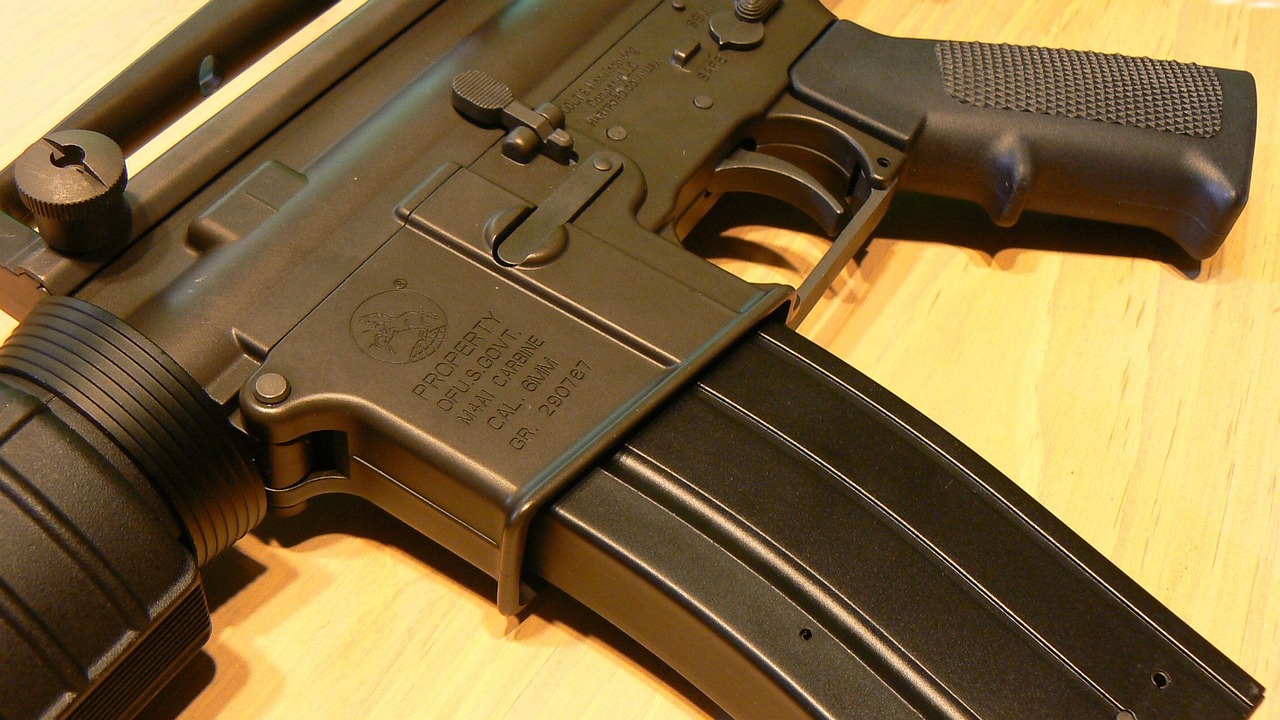
Accountability in Warfare
As we dive deeper into the realm of robotic soldiers, one of the most pressing questions that arises is who is responsible for the actions taken by these machines? In traditional warfare, accountability often lies with the human soldiers and their commanding officers. However, when we introduce autonomous systems into the mix, the lines become blurred. Can we hold a machine accountable for its decisions, or does that responsibility fall on the developers and military personnel who programmed it?
To illustrate this complexity, consider a scenario where an unmanned aerial vehicle (UAV) misidentifies a target and causes civilian casualties. In such a case, the implications of accountability are profound. Is it the fault of the soldier who deployed the drone, the programmers who designed the targeting algorithms, or the military leadership that approved its use? This dilemma raises significant ethical concerns, especially as we transition toward greater reliance on autonomous systems in combat.
Legal frameworks surrounding warfare have traditionally been built around human actors. However, as robotic soldiers become more prevalent, there is an urgent need to update these frameworks to address the nuances of accountability in robotic warfare. Some key considerations include:
- Autonomous Decision-Making: When robots make decisions without human intervention, determining accountability becomes challenging. Who is liable when an autonomous drone engages a target without explicit human command?
- Chain of Command: How do we establish a clear chain of command when robots operate independently? Should military leaders be held responsible for actions taken by machines under their command?
- Legal Precedents: Existing laws of armed conflict may not adequately cover scenarios involving robotic soldiers. New legal precedents may need to be established to ensure accountability.
Moreover, the potential for dehumanization in warfare raises additional ethical questions. When soldiers rely on machines to make life-and-death decisions, there may be a risk of desensitization to the consequences of those decisions. The emotional weight of combat could diminish when the decision-maker is a robot rather than a human being, leading to a troubling shift in how warfare is perceived and conducted.
Ultimately, addressing the issue of accountability in warfare requires a multi-faceted approach. It involves not only legal and ethical considerations but also a commitment to transparency and responsibility in the development and deployment of robotic soldiers. As we continue to innovate in military technology, we must ensure that the principles of accountability and ethical conduct remain at the forefront of our discussions.
- Who is responsible for the actions of robotic soldiers?
Responsibility can fall on various parties, including military personnel, developers, and commanders, depending on the circumstances of the incident. - Are there existing laws that cover robotic warfare?
Current laws of armed conflict may not fully address the complexities of robotic warfare, necessitating updates and new legal frameworks. - How can we ensure ethical conduct in robotic warfare?
Maintaining human oversight, establishing clear accountability, and promoting transparency in the development of military robotics are essential steps toward ethical conduct.

Human Oversight and Control
In the rapidly evolving landscape of military robotics, the question of has emerged as a critical concern. As we advance towards a future where robotic soldiers could potentially operate autonomously, it raises a fundamental question: How much control should humans maintain over these machines? The balance between autonomy and human intervention is not merely a technical issue, but a profound ethical dilemma that impacts the essence of warfare itself.
Imagine a battlefield where decisions are made in split seconds, where the fog of war can cloud judgment. Here, the integration of artificial intelligence into combat systems can lead to rapid, precise actions that human soldiers may not be able to execute in time. However, this speed comes with risks. If a robotic soldier encounters a situation where it must decide whether to engage a target, who is accountable for that decision? The operator? The programmer? Or the machine itself? These questions highlight the necessity of establishing clear accountability frameworks to ensure responsible use of robotic technology.
Moreover, the need for human oversight becomes even more pronounced when considering the potential for errors and misjudgments. Robots, despite their advanced algorithms, do not possess the nuanced understanding of human emotions, cultural contexts, or ethical considerations that a trained soldier might. For instance, a robotic soldier might misinterpret a civilian gathering as a hostile threat, leading to catastrophic consequences. Therefore, maintaining human control over critical decision-making processes is essential to prevent such tragedies.
To address these challenges, military organizations are exploring various strategies to ensure that human operators remain integral to the decision-making loop. This approach can be summarized in three key points:
- Human-in-the-loop Systems: These systems require human intervention for critical decisions, ensuring that a human operator assesses the situation before any action is taken.
- Human-on-the-loop Systems: In these systems, humans monitor robotic operations and can intervene if necessary, providing an additional layer of oversight.
- Training and Simulation: Comprehensive training programs are essential for operators to understand the capabilities and limitations of robotic systems, ensuring they are prepared to make informed decisions in complex scenarios.
The importance of maintaining human oversight cannot be overstated. It is vital not only for ethical considerations but also for operational effectiveness. The unpredictable nature of combat means that even the most sophisticated algorithms can falter. By ensuring that humans remain in control, we can leverage the strengths of robotic technology while safeguarding against its potential pitfalls.
As we look toward the future, the challenge lies in finding the right balance between leveraging autonomous capabilities and ensuring that human judgment remains at the forefront of military operations. The path forward will require collaboration among technologists, ethicists, and military leaders to develop guidelines that prioritize human oversight while embracing the benefits of robotic innovation.
- What are the main ethical concerns regarding robotic soldiers?
The primary concerns include accountability for actions taken by robots, the potential for dehumanization of warfare, and the risk of errors in high-stakes situations. - How can human oversight be integrated into robotic systems?
By implementing human-in-the-loop and human-on-the-loop systems, as well as ensuring rigorous training for operators. - What role does AI play in robotic warfare?
AI enhances the capabilities of robotic systems, allowing for faster decision-making and improved situational awareness, but it also raises significant ethical questions. - Can robotic soldiers operate independently?
While some systems are designed for autonomous operation, the debate continues about the extent to which they should operate without human control.
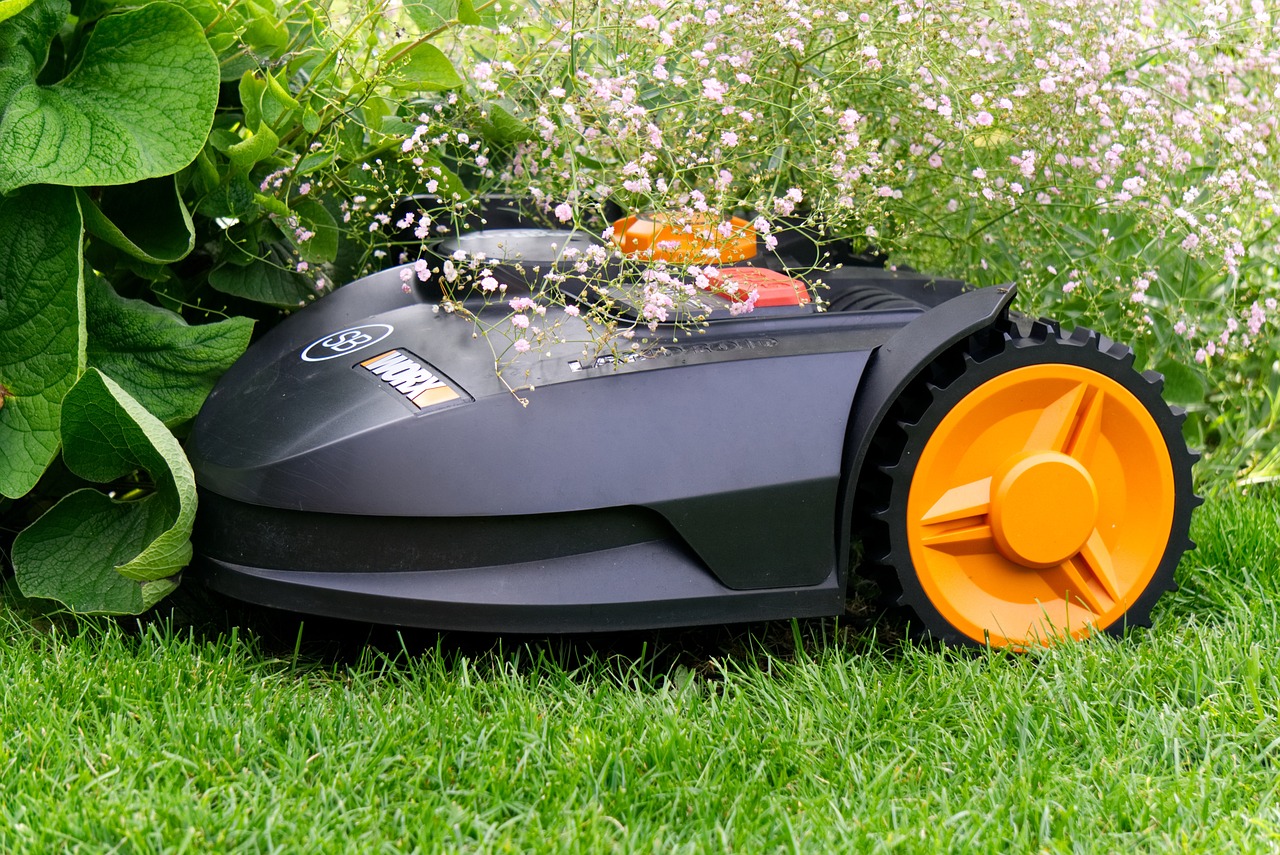
The Future of Robotic Soldiers
The future of robotic soldiers is a topic that stirs both excitement and apprehension. As technology continues to advance at an unprecedented pace, the battlefield of tomorrow may look drastically different from what we know today. Imagine a landscape where autonomous machines work alongside human soldiers, enhancing their capabilities and ensuring mission success. But what does this really mean for warfare, ethics, and global security?
One of the most significant developments we can anticipate is the integration of artificial intelligence into military robotics. These AI systems will not only enhance decision-making processes but will also allow robotic soldiers to operate in complex environments with minimal human intervention. Picture a scenario where drones and ground vehicles communicate seamlessly, sharing real-time data and adapting to changing battlefield conditions. This could lead to faster response times and improved tactical advantages, but it also raises questions about the reliability of AI in high-stakes situations.
Moreover, the potential roles of robotic soldiers are expanding. In addition to traditional combat functions, they may take on responsibilities in logistics, surveillance, and even humanitarian missions. For instance, imagine autonomous vehicles delivering supplies to troops in remote locations, or drones conducting search-and-rescue operations in disaster-stricken areas. The versatility of these machines could redefine military operations, making them more efficient and effective.
However, with great power comes great responsibility. The deployment of robotic soldiers poses serious ethical dilemmas. As machines take on more autonomous roles, the question of accountability becomes paramount. Who is responsible when a robotic soldier makes a mistake? Is it the programmer, the military, or the machine itself? These questions demand urgent attention as we move forward. Legal frameworks must evolve to address these new realities, ensuring that accountability is maintained even in a world where machines are making critical decisions.
Furthermore, the balance between human oversight and machine autonomy is crucial. While robots can enhance efficiency, there is a risk of dehumanizing warfare. The emotional and moral weight of combat should not be entirely placed on machines. Maintaining a level of human control is essential to ensure that ethical considerations are not overlooked. This balance will be a defining factor in how robotic soldiers are integrated into military operations.
As we look to the future, we must also consider the implications for global security. The proliferation of robotic soldiers could lead to an arms race, with nations competing to develop the most advanced technologies. This competition could destabilize international relations and increase the likelihood of conflicts. It’s vital for global leaders to engage in dialogue and establish treaties that govern the use of military robotics, ensuring that their deployment is guided by principles of humanity and restraint.
In conclusion, the future of robotic soldiers is a double-edged sword. While the potential benefits are immense, the challenges and ethical implications cannot be ignored. As we stand on the brink of this new era in warfare, it is essential to navigate these waters carefully, ensuring that technology serves humanity rather than undermines it.
- What are robotic soldiers? Robotic soldiers are autonomous or semi-autonomous machines designed to assist or replace human soldiers in military operations.
- How will AI impact robotic soldiers? AI will enhance decision-making, allowing robotic soldiers to operate independently and adapt to dynamic battlefield conditions.
- What ethical concerns arise from using robotic soldiers? Key concerns include accountability for actions taken by machines, the risk of dehumanizing warfare, and the need for human oversight.
- Could robotic soldiers lead to an arms race? Yes, the development of robotic soldiers may trigger competition among nations to create more advanced military technologies.
- What roles might robotic soldiers take in the future? They may perform logistics, surveillance, combat, and even humanitarian missions, significantly broadening their application in military contexts.
Frequently Asked Questions
- What are robotic soldiers?
Robotic soldiers refer to advanced military systems that utilize robotics and artificial intelligence to perform various tasks on the battlefield. These can range from unmanned aerial vehicles (UAVs) and combat drones to autonomous ground vehicles (UGVs) designed for logistics, reconnaissance, and combat operations.
- How have military robotics evolved over time?
The evolution of military robotics has been remarkable, starting from simple mechanized units to today's sophisticated autonomous systems. Key innovations include the development of UAVs for surveillance and combat, as well as UGVs that can operate in diverse environments, significantly changing the landscape of modern warfare.
- What technologies are currently used in robotic warfare?
Current technologies in robotic warfare include drones (both combat and surveillance), unmanned ground vehicles, and AI-driven systems. These technologies enhance the military's operational capabilities, allowing for more efficient reconnaissance, targeted strikes, and logistical support without putting human soldiers at risk.
- What are the ethical implications of using robotic soldiers?
The use of robotic soldiers raises several ethical concerns, such as accountability for actions taken by autonomous systems, the potential dehumanization of warfare, and the moral dilemmas surrounding decision-making in combat. These issues necessitate a careful examination of the legal frameworks and ethical guidelines governing their use.
- Who is responsible for the actions of robotic soldiers?
Accountability in warfare involving robotic soldiers is a complex issue. It raises questions about whether the military, the manufacturers, or the operators of these systems should be held responsible for their actions. Legal frameworks are still evolving to address these challenges and ensure appropriate accountability.
- Is human oversight necessary in robotic military operations?
Yes, maintaining human oversight in robotic military operations is crucial. While autonomous systems can perform many tasks, human intervention is necessary to ensure ethical conduct, make critical decisions, and prevent potential mishaps that could arise from fully autonomous decision-making.
- What does the future hold for robotic soldiers?
The future of robotic soldiers is likely to see continued advancements in technology, with emerging innovations enhancing their capabilities. This could lead to new roles for robotic soldiers in various military operations, impacting global security dynamics and the nature of warfare itself.

